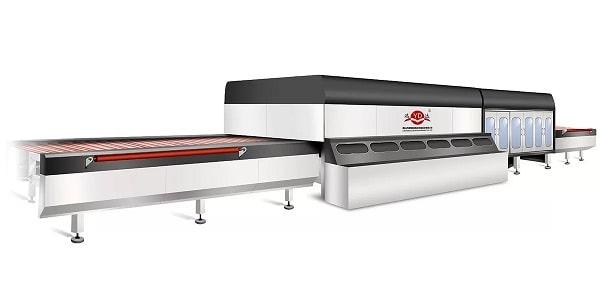When it comes to using the glass tempering furnaces, there are many important things to note when using a furnace. These include concerns about conveyors, magnetic clutches, heating times and quenching section rollers. These guidelines should be followed when using a glass tempering furnace to ensure safe, efficient production. Glass tempering stoves work a bit like cooking – your kitchen will have the latest and greatest equipment, but the food can still go bad. Being a great chef requires more than just having the simplest equipment, it requires understanding the entire process. You have to understand the ingredients and techniques and equipment.
Automation makes things easier. This is generally what we try to do with glass tempering furnaces – automate many of the processes to achieve more consistent quality and minimize operating errors. Today, glass tempering furnaces are equipped with sensors that allow operators to drag data and measurements. Ladglass tempering glass furnaces are used to heat-treat glass to increase its strength and durability. To ensure the safe and efficient operation of a tempering glass furnace, it’s important to follow certain notices and guidelines.
Basic Notices For Using Tempering Glass Furnaces:
- Read the User Manual
Before operating the tempering glass furnace, thoroughly read the user manual provided by the manufacturer. It contains crucial information about installation, operation, and maintenance.
- Safety First
Prioritize safety at all times. Ensure that operators and maintenance personnel are trained in the safe operation of the furnace and that they wear appropriate personal protective equipment (PPE), including heat-resistant gloves, safety glasses, and protective clothing.
- Proper Installation
Follow the manufacturer’s guidelines for proper installation of the furnace. Ensure it is installed on a stable and level foundation, and that all electrical and gas connections are made by qualified professionals.
- Maintenance Schedule
Establish a regular maintenance schedule for the furnace. This should include cleaning the heating elements, inspecting and replacing worn-out parts, and checking the control systems for proper functioning.
- Temperature Control
Monitor and control the temperature accurately. Overheating can damage the glass or create safety hazards. Regularly calibrate the temperature control system to maintain precise temperature settings.
Watch Out The Tempered Glass Conveyors
Tempered glass conveyors are designed to move loads of glass panels in a stable and controlled manner. The length of the furnace body should be equal to the length of the cooling section and the quenching section, so that the glass plate reaches the same stroke length during the quenching and cooling processes. During the loading process, the heated flat glass load is transported along a conveyor to the quenching unit. The quenching unit is designed to transport flat glass loads between upper and lower rows of nozzles. The rollers in the upper set are engaged with the drive chain during the indexing cycle, while the rollers in the lower set are lifted into engagement with the drive chain when the glass is ready for the unloading process.
The conveyor is driven by a drive mechanism and includes elongated rollers 44 . These rollers are mounted in an elongated furnace casing. The drive chain is connected to the end of the roller and is supported by the direct part of the glass. After the indexing cycle is complete, the conveyor remains in frictional engagement with the drive chain. Drive chain driven switches for loading and unloading stations of glass tempering furnaces. These switches determine how much the glass oscillates within the furnace, its rate of acceleration and deceleration, and when the index cycle begins and ends. Tempered glass furnaces are often equipped with continuous action conveyors that move the glass sheets in an oscillating motion. This oscillation occurs when the glass sheet is heated, and it prevents the glass sheet from overheating.

